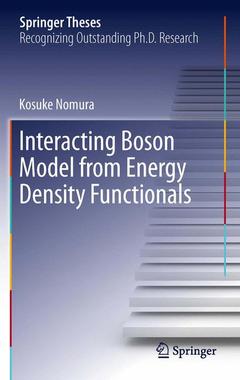Description
Interacting Boson Model from Energy Density Functionals, 2013
Springer Theses Series
Author: Nomura Kosuke
Language: English
Subjects for Interacting Boson Model from Energy Density Functionals:
Publication date: 03-2015
Support: Print on demand
Approximative price 99.99 €
In Print (Delivery period: 15 days).
Add to cartPublication date: 02-2013
188 p. · 15.5x23.5 cm · Hardback
Description
/li>Contents
/li>Biography
/li>Comment
/li>
Basic Notions.- Rotating Deformed Systems with Axial Symmetry.- Weakly Deformed Systems with Triaxial Dynamics.- Comparison with Geometrical Model.- Is axially Asymmetric Nucleus Gamma Rigid or Unstable?.- Ground-state Correlation.- Summary and Concluding Remarks.
Dr. Kosuke Nomura
Institut für KernphysikUniversität zu Köln
Köln
Germany
(Current address)

